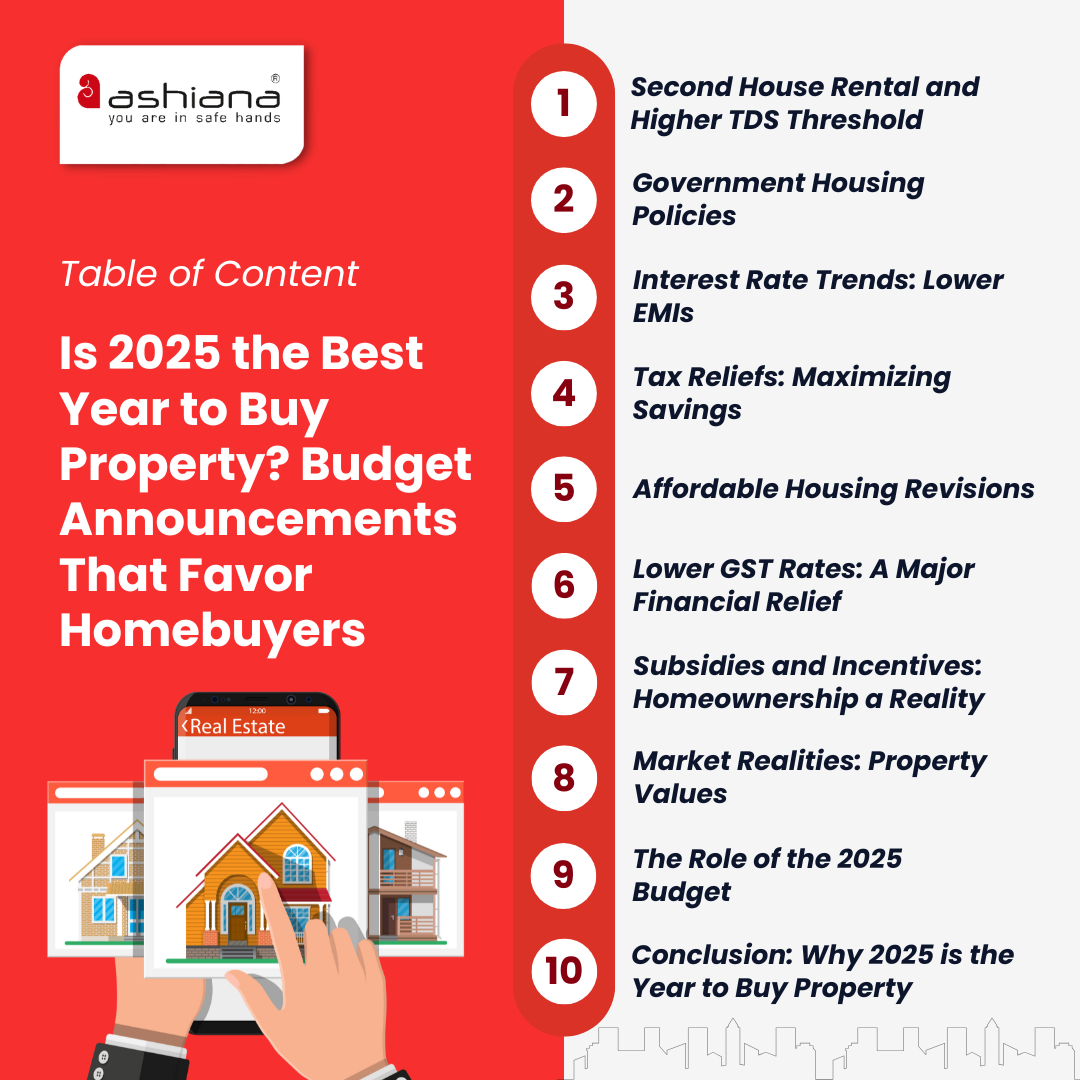

2025 is expected to be an ideal year for homebuyers due to favorable government policies, tax incentives, and revised affordable housing criteria. Budget 2025 is likely to introduce measures such as increased home loan interest deductions, lower GST rates, and expanded subsidies under schemes like PMAY, making homeownership more accessible and affordable.
Budget 2025 is expected to bring several benefits for homebuyers, including:
These measures will reduce the financial burden on buyers and make homeownership more achievable.
Experts like Anuj Puri of Anarock suggest that the current affordable housing price cap of ₹45 lakh is outdated, especially in high-cost cities like Mumbai. Budget 2025 is expected to revise this cap to ₹85 lakh in Mumbai and ₹60-65 lakh in other metro cities. This change will allow more properties to qualify as affordable housing, enabling buyers to access lower GST rates and government subsidies.
Ashiana, Ashiana Housing build homes. Homes surrounded by vast green spaces and fresh breeze. Homes cocooned in secured gated complexes. Homes where futures are forged and there are opportunities to grow. And Homes in environments brimming with healthy activity, trust and respect. At heart, we build communities with care.
Other posts by Ashiana
Join 1000+ of fellow readers. Get expert real estate knowledge straight to your inbox absolutely free. Just enter your email address below.